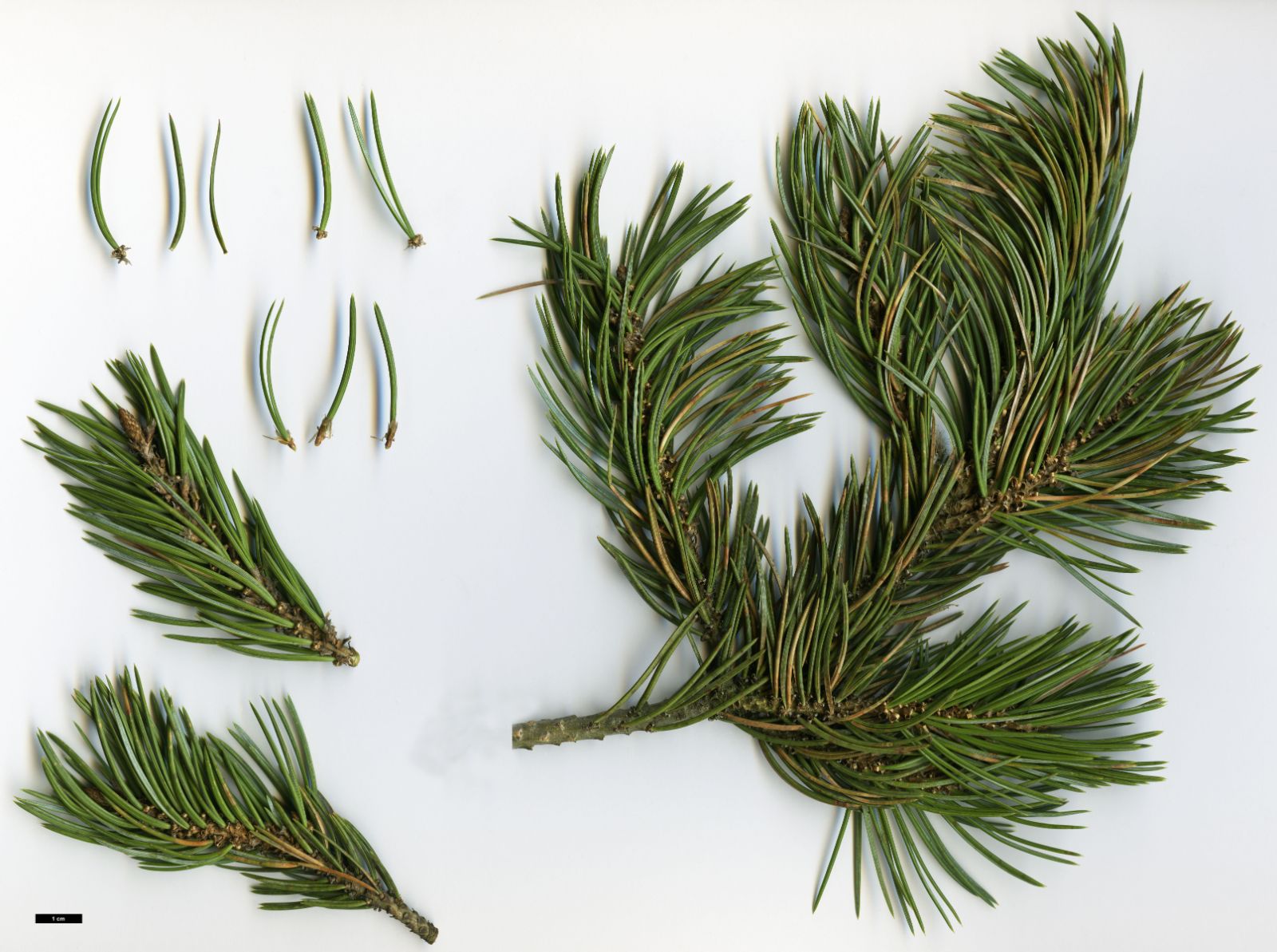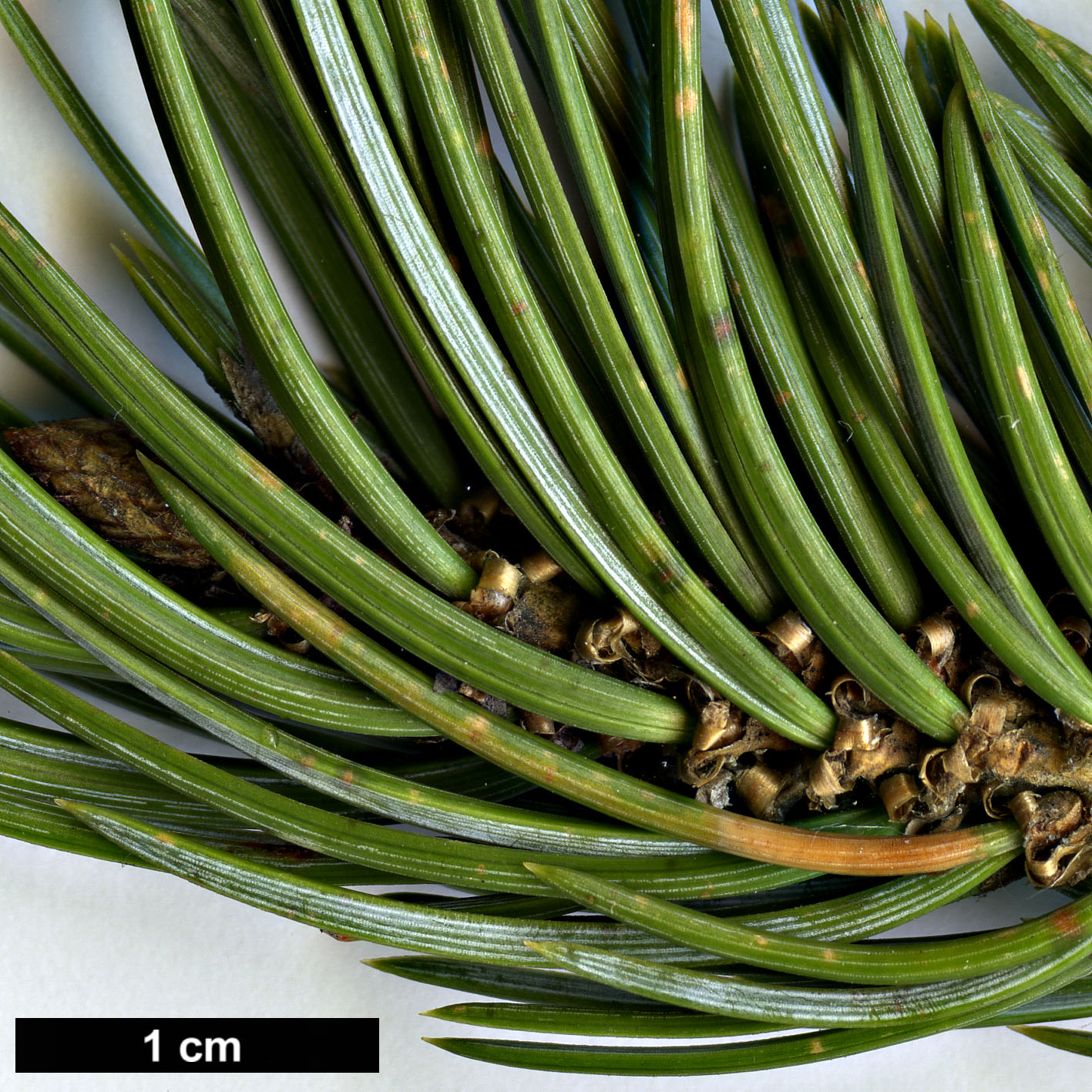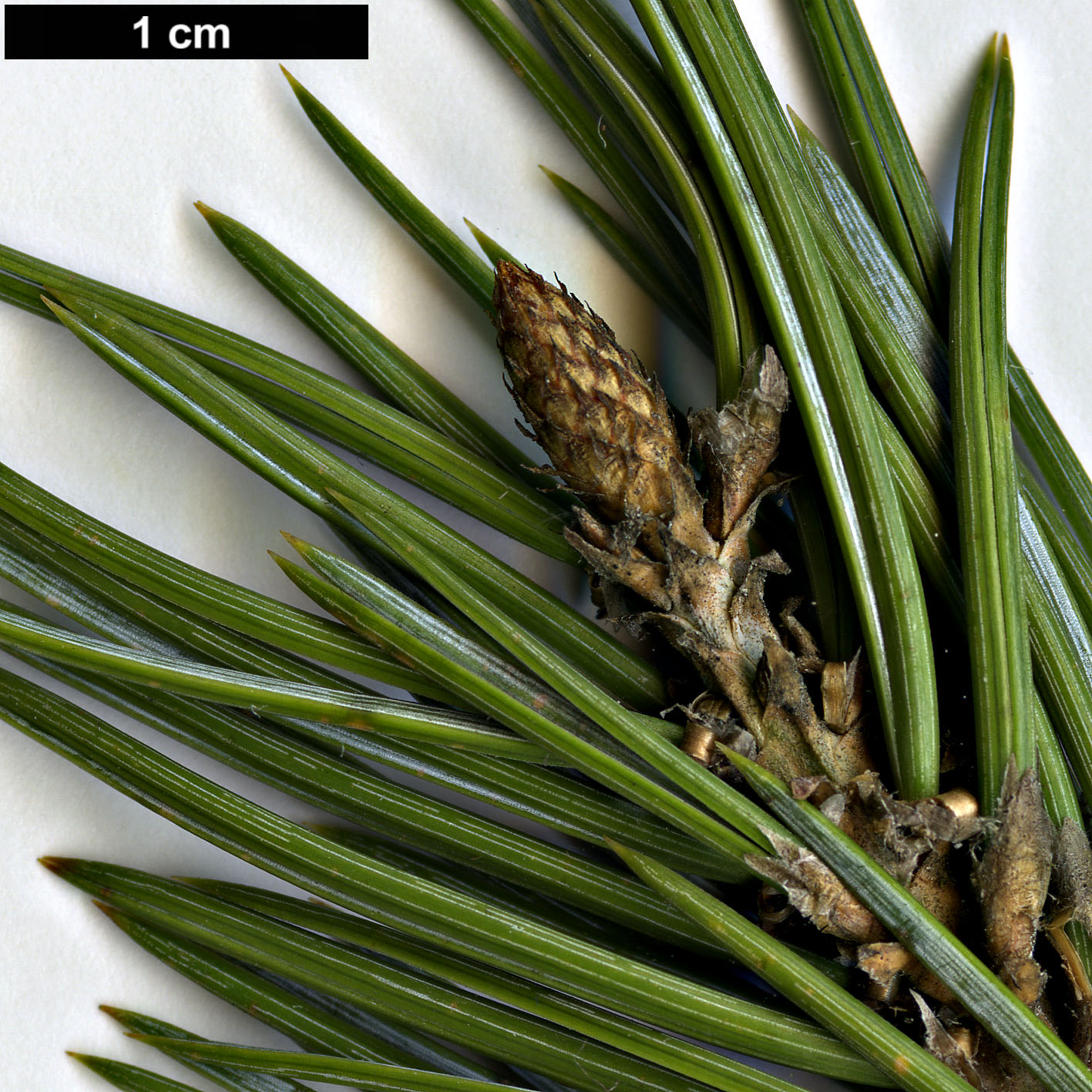Pinus edulis
Credits
Article from New Trees by John Grimshaw & Ross Bayton
Recommended citation
'Pinus edulis' from the website Trees and Shrubs Online (treesandshrubsonline.
Genus
- Pinus
- Subgen. Strobus, Sect. Parrya
Common Names
- Colorado Pinyon
- Rocky Mountain Pinyon
Synonyms
- P. cembroides var. edulis (Engelm.) Voss
Other taxa in genus
- Pinus albicaulis
- Pinus arizonica
- Pinus armandii
- Pinus attenuata
- Pinus ayacahuite
- Pinus balfouriana
- Pinus banksiana
- Pinus bhutanica
- Pinus brutia
- Pinus bungeana
- Pinus canariensis
- Pinus cembra
- Pinus cembroides
- Pinus chiapensis
- Pinus contorta
- Pinus coulteri
- Pinus culminicola
- Pinus densata
- Pinus densiflora
- Pinus devoniana
- Pinus durangensis
- Pinus echinata
- Pinus elliottii
- Pinus engelmannii
- Pinus eremitana
- Pinus flexilis
- Pinus gerardiana
- Pinus greggii
- Pinus × hakkodensis
- Pinus halepensis
- Pinus hartwegii
- Pinus heldreichii
- Pinus henryi
- Pinus × holfordiana
- Pinus hwangshanensis
- Pinus jeffreyi
- Pinus johannis
- Pinus koraiensis
- Pinus lambertiana
- Pinus leiophylla
- Pinus longaeva
- Pinus massoniana
- Pinus maximartinezii
- Pinus monophylla
- Pinus montezumae
- Pinus monticola
- Pinus morrisonicola
- Pinus mugo
- Pinus muricata
- Pinus nelsonii
- Pinus nigra
- Pinus oocarpa
- Pinus orizabensis
- Pinus palustris
- Pinus parviflora
- Pinus patula
- Pinus peuce
- Pinus pinaster
- Pinus pinceana
- Pinus pinea
- Pinus ponderosa
- Pinus pseudostrobus
- Pinus pumila
- Pinus pungens
- Pinus quadrifolia
- Pinus radiata
- Pinus remota
- Pinus resinosa
- Pinus rigida
- Pinus roxburghii
- Pinus sabiniana
- Pinus serotina
- Pinus sibirica
- Pinus strobiformis
- Pinus strobus
- Pinus sylvestris
- Pinus tabuliformis
- Pinus taeda
- Pinus taiwanensis
- Pinus teocote
- Pinus thunbergii
- Pinus torreyana
- Pinus virginiana
- Pinus wallichiana
- Pinus wangii
- Pinus yunnanensis
Editorial Note
The text below is drawn from both New Trees (Grimshaw & Bayton 2009, who discussed this taxon at species rank as here) and Bean’s Trees and Shrubs (Bean 1976, who discussed it as P. cembroides var. edulis). We have combined these texts here as we are reorganising articles within Pinus to enable a partial revision of this important genus to commence in late 2023. See the Editorial Note at the beginning of the genus article for further details.
TC, October 2023.
This species was mentioned by Bean (1976b) under the name P. cembroides var. edulis (Engelm.) Voss. Its gross morphology is akin to that of P. cembroides, though the leaves are almost invariably in pairs, the seeds have thinner shells, the cones are on average slightly larger with fewer, larger, thicker scales, and the umbo is often depressed (rather than raised or flat). In some populations of P. edulis the immature plants are dioecious (male and female cones restricted to separate trees). Mature trees produce both male and female cones, though there are more empty seeds per cone than in the cones from immature, female plants (Floyd 1982). Thieret 1993, Farjon 2005a. Distribution USA: Arizona, Colorado, New Mexico, western Oklahoma, northwest Texas, Utah, southern Wyoming. Habitat Arid, rocky slopes and mesas between 825 and 2350 m asl. USDA Hardiness Zone 4. Conservation status Lower Risk. Illustration Farjon 2005a. Cross-references B219, K214.
Away from its native range and the arid southwestern United States more generally, Pinus edulis is rare in cultivation, and for an attractive tree with very tasty nuts and huge cultural significance to Native Americans, this is surprising. Like all the pinyon group it has great potential as a relatively compact, densely furnished shrubby tree for landscaping, particularly in arid places, and it is indeed used for this purpose in its native range and adjacent areas (Lanner 1981, Nold 2008). It is now commercially available in the United Kingdom, but older specimens are rare in Europe. One at Edinburgh dating from before 1969 is the most venerable traced, but it is a poor plant (M. Gardner, pers. comm. 2007). There are larger, happier trees at Kew and the Cambridge University Botanic Garden. It is also grown at Pinetum Anthoine, Jamioulx, Belgium, along with the dwarf selection ‘Juno’ from Kenwith Nursery in Devon. The related P. monophylla is another attractive, tolerant but horticulturally under-used dryland pine that deserves more attention (Nold 2008).
Bean’s Trees and Shrubs
[as P. cembroides var. edulis (Engelm.) Voss]
Leaves chiefly in pairs instead of threes and rather thicker; otherwise scarcely differing from typical P. cembroides. Native mainly of Colorado, Utah, Arizona, and New Mexico, but also occurring in northern Mexico. It is a pleasing small tree of neat dense habit, but very rare in gardens.



